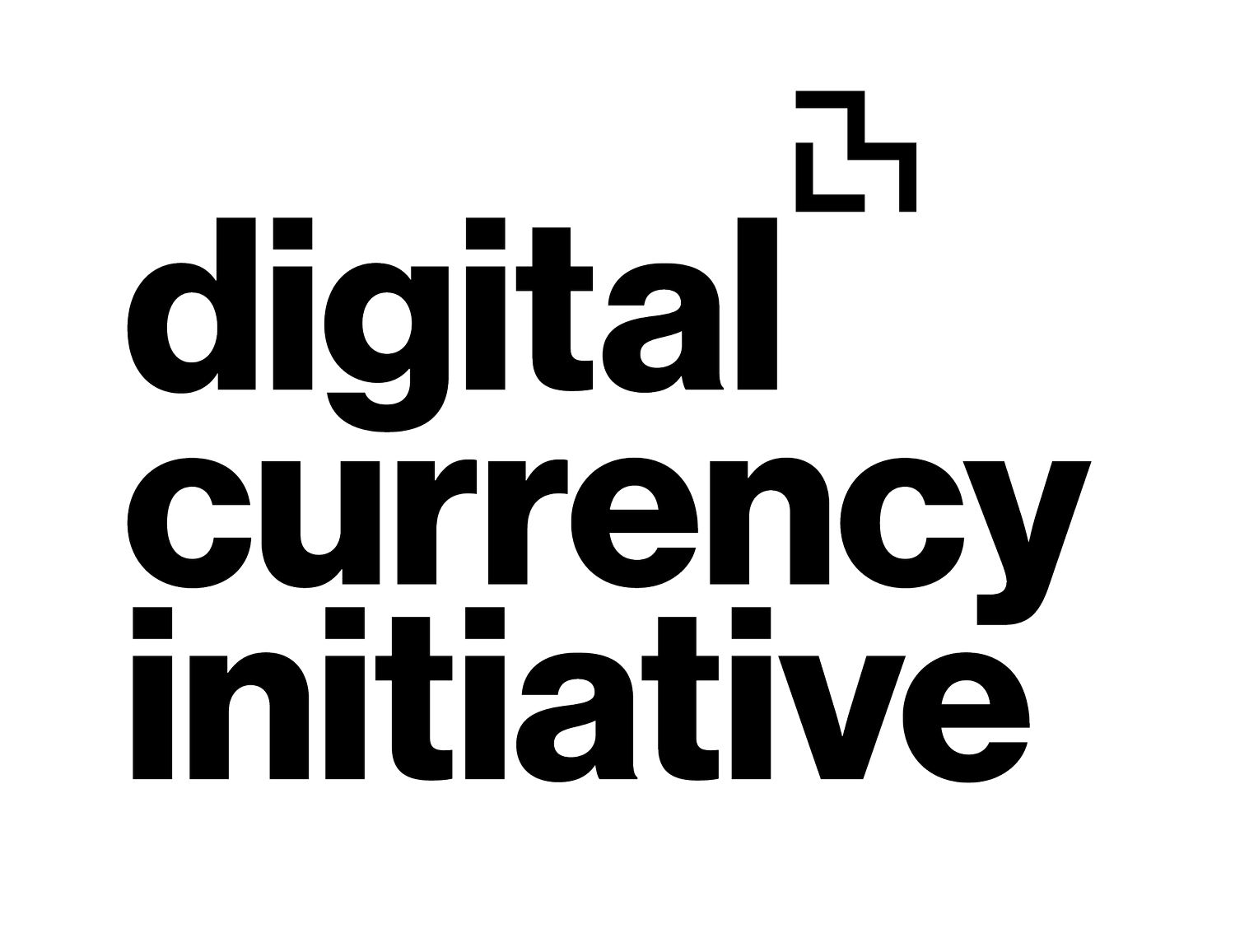
USA Today’s The Excerpt interviews Neha
“There’s something to cold hard cash. You can hold it; you can smell it; it feels a certain way in your pocket. Earlier this year, President Donald Trump directed the Treasury Department to stop minting pennies. What happens as the world of currency goes increasingly digital? Will traditional currencies soon become a thing of the past? And who stands to benefit, and who might this rapid shift be hurting? Neha Narula, Director of the Digital Currency Initiative at the MIT Media Lab, joins The Excerpt to take a closer look at this transition period for money and how it might evolve.”

Bitcoin Magazine interviews Neha Narula
“MIT DCI Director Neha Narula: How Academia Interacts With The Bitcoin Ecosystem
A talk with the director of DCI at MIT, Neha Narula, on the role academia plays in the Bitcoin ecosystem and how that might evolve over time.”

Ledger Insights: “Digital Pound paper explores privacy enhancing technologies for CBDC”
“In the West there has been significant resistance to the concept of retail central bank digital currencies (CBDC) based on ‘Big Brother’ concerns. In other words, privacy fears that the government can monitor personal payment transactions. Or sometimes, even concerns that they might attempt to control behaviors. Hence, the Bank of England and the Massachusetts Institute of Technology Digital Currency Initiative (MIT DCI) published a paper exploring privacy enhancing technologies (PETs) for a possible digital pound.”

Ledger Insights: “MIT’s Project Hamilton for CBDC open sources smart contract research”
“This week MIT’s Digital Currency Initiative (MIT DCI) released the source code of research into smart contracts for central bank digital currency (CBDC) – PArSEC (Parallelized Architecture for Scalably Executing smart Contracts). Given the solution is designed for central banks, it is a centralized offering and sidesteps using blockchain, although it supports Ethereum smart contracts. “

Cointelegraph: “MIT Digital Currency Initiative introduces at-scale, programmable CBDC platform”
“The Massachusetts Institute of Technology (MIT) Digital Currency Initiative (DCI) has introduced the experimental PArSEC platform. PArSEC — short for "parallelized architecture for scalably executing smart contracts" — is open source and developed with central bank digital currency (CBDC) in mind. “

MIT Technology Review: “What's Next for Crypto”
“Although crypto enthusiasts may now be inclined to distance themselves from FTX, the episode reflects ‘the crypto we created,’ says Neha Narula, director of the Digital Currency Initiative at MIT.”

Engaging with regulators, insights from near and afar: an interview with Chris Calabia in The Axial Studio
DCI senior advisor Chris Calabia was interviewed on his experience as a regulator, his advice for innovation, and more. Chris worked for over twenty years at the Federal Reserve Bank of New York. Through that role and others, including as a Senior Advisor on regulatory policy at the Bill & Melinda Gates Foundation, Chris has worked closely with regulators from all of the world, providing him a unique perspective not only into the mindset of US regulators, but regulators in many different socioeconomic contexts.

OMFIF: "CBDCs present new opportunities for handling disputes and fraud" by DCI Team Members
Potential designs may involve intermediaries in new and different ways
Central bank digital currencies potentially offer, in a digital form, the advantages of central bank money: settlement finality, liquidity and integrity. However, both offline and online commerce are susceptible to fraud and other kinds of disagreements. The existing techniques for managing fraud and disputes focus on giving users easy access to chargebacks, which relies on intermediaries to resolve disputes. Potential designs for CBDC may involve intermediaries in new and different ways, or may not use intermediaries at all, calling into question how to address fraud if CBDCs become widely used.

CoinDesk’s Money Reimagined: "Back to Basics After ‘Token Casinos’ Wreaked Havoc, With Neha Narula"
On this episode of “Money Reimagined,” Michael Casey, solo in Davos, Switzerland, on the sidelines of the World Economic Forum, speaks with Neha Narula, the director of the MIT Digital Currency Initiative to discuss the trends of both digitalization and innovation pertaining to stablecoins, digital currencies and the future of public money,

CoinDesk names MIT one of the “Best Universities for Blockchain 2022”
A private research university established in 1861, the Massachusetts Institute of Technology (MIT) is one of the world’s most prestigious schools and ranked first in the QS World University Rankings in 2023 due to its academic and research excellence in multiple fields, including blockchain.

WBUR's Tales from the Crypto | Part I: Ukraine's NFTs and the 'Fyre Fest' of cryptocurrency
The Endless Thread team is excited to introduce a new mini-series: Tales from the Crypto, or three windows into the wild world of cryptocurrency. It's a landscape ripe for investors, gamblers, opportunists, and academic investigators — both online and offline. At every turn, our hosts and producers have turned to experts to make sense of this volatile, ever expanding terrain.
In the series' first installment, co-hosts Ben Brock Johnson and Amory Sivertson dive into a viral tweet about NFTs aiding Ukrainians with the war effort against Russia, as well as plans for a crypto island paradise that was never meant to be.

CoinDesk’s Money Reimagined "The Coming Digital Currency War
A Consensus panel from Austin, Texas, "Money Reimagined" host Michael Casey starts off the introductions of an important discussion with Emily Parker, CoinDesk's executive director of global content; the Honorable J. Christopher Giancarlo, dubbed “CryptoDad,” served as 13th Chairman of the United States Commodity Futures Trading Commission; and Neha Narula is the Director of the Digital Currency Initiative at the MIT Media Lab, to discuss the social and geo-political implications of the rise of international competition between central bank digital currencies, stablecoins and native crypto currencies.

MIT Technology Review: “The MIT researcher who helps senators understand digital currencies“
Last summer, a special subcommittee of the US Senate met remotely to weigh the benefits of launching a central-bank digital currency, or CBDC—something that could, if optimally designed, transform the US financial system, making it more accessible to more citizens. For senators staring intently at their laptops, this was basically the first day of digital-currency school. And to introduce them to this highly technical world, the first witness that Senator Elizabeth Warren called was MIT Digital Currency Initiative director Neha Narula.

MIT News: "MIT experts test technical research for a hypothetical central bank digital currency"
Collaboration with Federal Reserve Bank of Boston yields progress in understanding how a digital currency might be developed in the future.
CAMBRIDGE, Mass. -- In collaboration with a team at the Federal Reserve Bank of Boston, MIT experts have begun designing and testing technical research through which further examination of a Central Bank Digital Currency (CBDC) can be performed in the U.S.
The effort, known as Project Hamilton, is in an exploratory phase, and the research is not intended as a pilot or for public deployment. Instead, the researchers have explored two different approaches that could be used to process transactions, and thus could indicate the technical feasibility of a potential CBDC model. In a process involving significant design flexibility, the MIT group tested factors such as the volume and speed of transactions, and the resilience of the systems in general, among other requirements for a viable digital currency.

AJ Towns listed as one of the "Most Influential 2021: The Developers Who Wrote Bitcoin’s Taproot Upgrade"
Nick along with A.J. Towns, Tim Ruffing and Pieter Wuille are the authors credited for writing the three BIPs that made up Taproot, the most significant Bitcoin upgrade in four years.

"Why Central Bank Digital Currencies?" in Federal Reserve Bank of New York's Liberty Street Economics
DCI Director Neha Narula co-authored the piece, "Why Central Bank Digital Currencies?" published in the Federal Reserve Bank of New York's Liberty Street Economics
“In the past year, a number of central banks have stepped up work on central bank digital currencies (CBDCs – see map). For central banks, are CBDCs just a defensive reaction to private-sector innovations in money, or are they an opportunity for the monetary system? In this post, we consider several long-standing goals of central banks in their support and provision of retail payments, why and how central banks tackle these issues, and where CBDCs fit into the array of potential solutions.”

CNBC's Dain Evans interviews Neha Narula for "China’s digital yuan could pose challenges to the U.S. dollar"
China is beating the U.S. when it comes to innovation in online money, posing challenges to the U.S. dollar’s status as the de facto monetary reserve. Nearly 80 countries — including China and the U.S. — are in the process of developing a CBDC, or Central Bank Digital Currency. It’s a form of money that’s regulated but exists entirely online. China has already launched its digital yuan to more than a million Chinese citizens, while the U.S. is still largely focused on research.
The two groups tasked with this research in the U.S., MIT’s Digital Currency Initiative and the Federal Reserve Bank of Boston, are parsing out what a digital currency might look like for Americans. Privacy is a major concern, so researchers and analysts are observing China’s digital yuan rollout.

"The Fed’s digital dollar could bring millions into the digital economy" by Quartz
Neha discussed her Subcommittee Hearing: Building A Stronger Financial System: Opportunities of a Central Bank Digital Currency on June 9th and DCI’s current collaborative CBDC project with the Federal Reserve Bank of Boston, with Scott Nover of Quartz.

The Block Crypto reviews the Cryptoeconomic Systems Journal
MIT’s Digital Currency Initiative has launched a new academic journal, called Cryptoeconomic Systems.
It’s a step toward a more robust academic dialogue around blockchain and crypto topics

Neha discusses N.F.T.s in "How Memes Become Money" by The New Yorker
DCI Director Neha Narula took part in The New Yorker’s “How Memes Become Money” discussion. Watch the highlight reel by clicking here.
